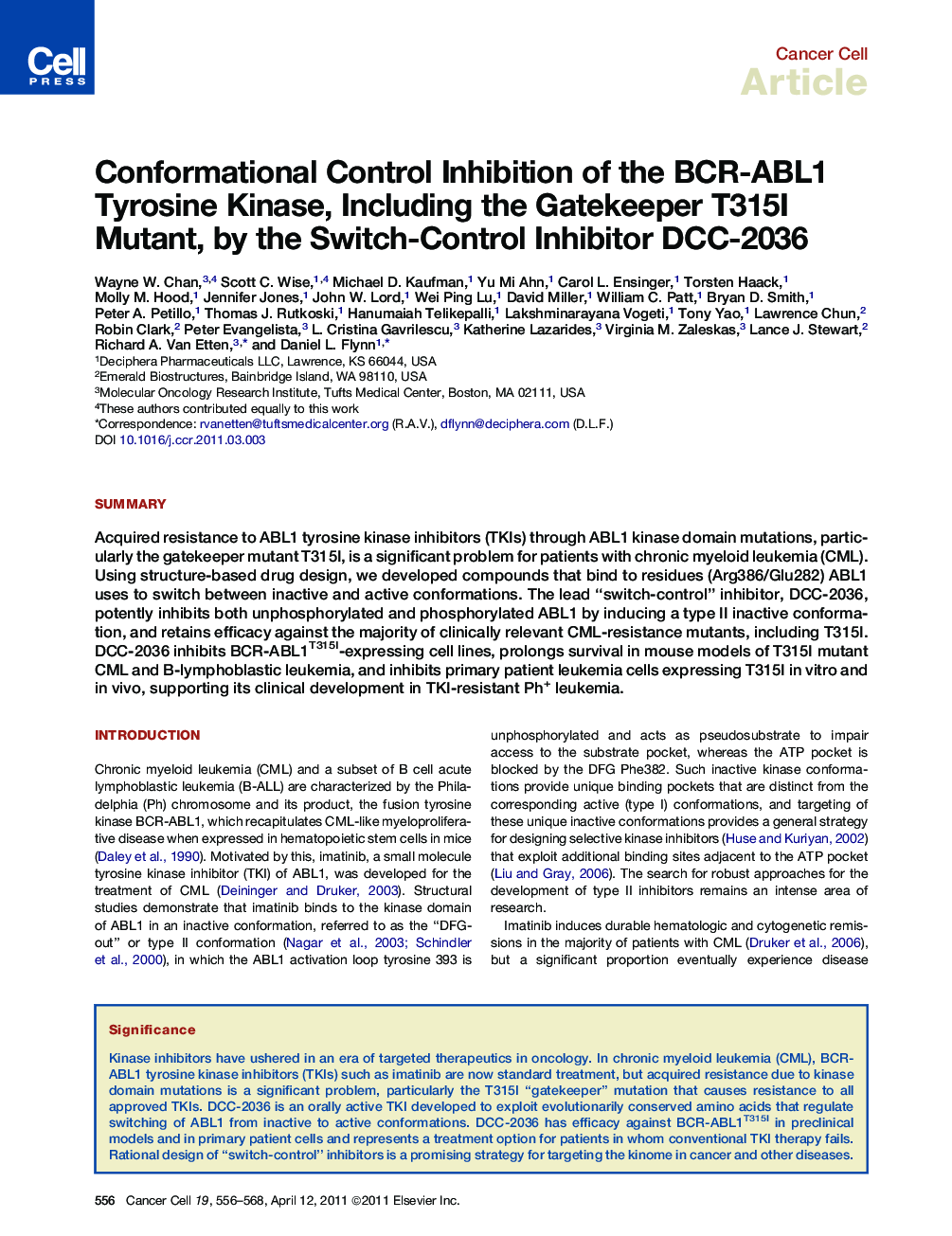| کد مقاله | کد نشریه | سال انتشار | مقاله انگلیسی | نسخه تمام متن |
|---|---|---|---|---|
| 2107542 | 1083684 | 2011 | 13 صفحه PDF | دانلود رایگان |

SummaryAcquired resistance to ABL1 tyrosine kinase inhibitors (TKIs) through ABL1 kinase domain mutations, particularly the gatekeeper mutant T315I, is a significant problem for patients with chronic myeloid leukemia (CML). Using structure-based drug design, we developed compounds that bind to residues (Arg386/Glu282) ABL1 uses to switch between inactive and active conformations. The lead “switch-control” inhibitor, DCC-2036, potently inhibits both unphosphorylated and phosphorylated ABL1 by inducing a type II inactive conformation, and retains efficacy against the majority of clinically relevant CML-resistance mutants, including T315I. DCC-2036 inhibits BCR-ABL1T315I-expressing cell lines, prolongs survival in mouse models of T315I mutant CML and B-lymphoblastic leukemia, and inhibits primary patient leukemia cells expressing T315I in vitro and in vivo, supporting its clinical development in TKI-resistant Ph+ leukemia.
► Switch-control inhibitors exploit mechanisms of kinase conformational shifts
► Switch-control inhibitor DCC-2036 potently inhibits BCR-ABL1 gatekeeper mutant T315I
► DCC-2036 has efficacy in a mouse model of T315I-induced CML and against cells of patients with CML
► DCC-2036 may be an option for therapy of patients with CML for whom conventional TKIs fail
Journal: - Volume 19, Issue 4, 12 April 2011, Pages 556–568